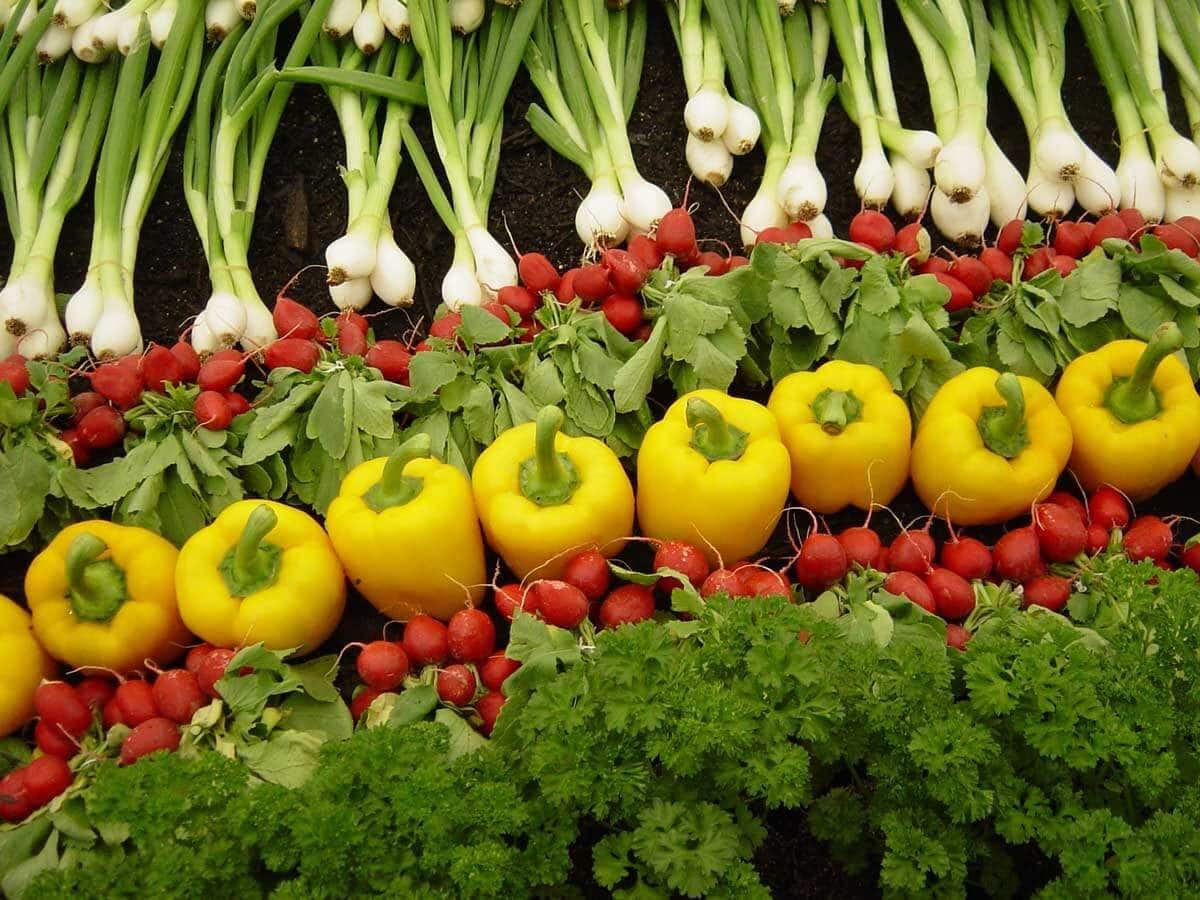By Mukhtar Dar
Introduction
Since the dawn of the industrial age, technology has been lightening the burden of the farming sector, and has enabled the farmers to adopt different methods and techniques for making the sector a sustainable means of livelihood and gainful employment. However, during the past few decades, the disproportionate use of synthetic chemicals and pesticides in agriculture is ruining the soils and thereby killing the organic materials that they contain. Furthermore, the practice decreases crop sustainability, increase input costs. The favourable environmental conditions such as suitable temperature and easy availability of water make Jammu & Kashmir an apt place for organic farming, practised all over the world as an optimal alternative to inorganic farming. With proper implementation and development of organic farming, this agriculture system has all the potential to become a lucrative and sustainable means of livelihood in Jammu and Kashmir.
The origin of organic farming
The concept of organic farming evolved in 1930 and 1940 as a reaction to the environmental harm caused by the use of chemical pesticides and aesthetic fertilizers in conventional agriculture. So keeping in view the sustainability and eco-friendliness of organic farming, it was recognized as the best-known alternative to conventional agriculture. There is no single definition that applies to the approach of organic farming. However, there is a common premise that organic farming seeks to safeguard biodiversity, recycle resources, and build on sustainable agriculture practices that are pro-health and pro-environment. Several countries have their own regulations that define the scope of organic farming. As per the definition of the United States Department of Agriculture (USDA) study team, for instance, organic farming is defined as “organic farming is a system which avoids or largely excludes the use of synthetic inputs (such as fertilizers, pesticides, hormones, feed additives etc.) and to the maximum extent feasible rely upon crop rotations, crop residues, animal manures, off-farm organic waste, mineral grade rock additives and biological system of nutrient mobilization and plant protection”. A quick look at the aims, as documented by the International Federation of Organic Agriculture Movement, reveal that organic farming includes:
1) To produce food of high nutritional quality in sufficient quantity.
2) To work with the natural system rather than seeking to dominate them.
3) To encourage and enhance biological cycles within farming system-involving microorganisms, soil flora and fauna, plants and animals.
4) To maintain and increase the long term fertility of the soil.
5) To use, as far as possible, renewable resources. To work as much as possible, within a closed system, with regard to organic matter and nutrient elements.
6) To give all livestock conditions of life that allow them to perform all aspects of their innate behavior.
7) To avoid all forms of pollution that may result from agricultural techniques.
8) To maintain the genetic diversity of the agricultural system and its surroundings, including the plants and wildlife habitats.
9) To allow agricultural producers adequate returns and satisfaction from their work including safe drinking water.
Organic farming in India
India is predominantly an agricultural country, where agriculture contributes to about 14.6 percent of the Gross Domestic Product (GDP) and supports over 58 percent of the nation’s population for livelihood (GOI, 2010). However, soon after the two and half decades of independence, the demand for food in the country was the prime concern of the policymakers. India’s agriculture system was not producing enough to meet the demands of a rapidly increasing population. With a motive to be self-reliant by producing sufficient food, the modern techniques were adopted in the agriculture sector and continued under the label, the green revolution. It has changed the discourse of the agriculture sector of India and transformed India’s status from being a food importing country to food exporting one. However, this success was achieved at the cost of ecological degradation and adverse effects on the environment that went unrecognized and unrectified to detrimental effects over time. With the increasing awareness about the linkages between health and environment at the micro and the macro level, it is important to note that the intensive use of chemicals in farming compelled policymakers to push for organic farming as the obvious alternative solution (Reddy BS 2010). The negative effects of conventional farming were being realized by producers, consumers and policymakers. It was in June 2001 that the Government of India introduced the National Programme for Organic Production (NPOP) with the motive to promote sustainable agricultural production, environmental conservation, reduction in the use and import of agrochemicals, the promotion of export and rural development. To achieve these objectives, the national standards for organic production have also been drafted. Agriculture Processed Food Export Development Authority (APEDA), Ministry of Commerce, Govt. India was made a nodal regulatory agency for NPOP. APEDA was further assigned the duty to export organic products and given the task of making the rules and regulations related to it. As a follow up to this, the government of India initiated several programmes with an aim to promote organic agriculture in the country. Some of the major programmes that were initiated are National Horticulture Mission and Rashtriya Krishi Vikas Yojna. In 2015, the government introduced a scheme on Paramparagat Krishi Vikas Yojna (PKVY). Under these initiatives, programmes like Organic Farming capacity building, market linkage initiatives, organic clusters development and other schemes are also operating. According to data available in FIBL & IFOAM Year Book, 2020, India stands at 8th position in terms of the World’s Organic Agricultural land and 1st in terms of the total number of producers.
Organic farming in Jammu and Kashmir
Jammu and Kashmir’s agriculture industry which is worth 1600 crores and is steadily growing every year has around 50 thousand hectares of land under it. The economy of J&K is heavily dependent on the agriculture sector as it contributes to about 65 per cent of the revenue to J&K. The sector is the backbone of the Jammu and Kashmir economy as it also engages 70% of the population, directly or indirectly. Furthermore, Jammu and Kashmir is blessed with varied agro-climatic zones, cultivating several varieties of agricultural and horticultural crops, some of which are unique. The Jammu region produces high quality ‘Basmati’, ‘Rajmash’, Black Caraway (‘zeera’) etc., while the Kashmir region holds a unique position in quality Saffron, ‘Zeera’, fresh and dry temperate fruits and commercial floriculture. However, declining profitability, environmental degradation and ecological unsustainability are a matter of concern. The Environment Sustainability Index of Jammu and Kashmir is deteriorating very fast due to various reasons including extensive utilization of fertilizers and other agrochemicals that have led to the worsening of soil health. As compared to other states, fertilizer and other agrochemical consumption is less in Jammu and Kashmir. The fertilizer consumption in J&K is 38.3 kg/ha as compared to 170 kg/ha in Punjab. The estimated quantity of nutrients mined by crops is 48 kg/ha. However, the scenario is changing as the fertilizer use in Jammu and Kashmir is increasing 10 to 15 % every year. Experts say that excessive use of chemical fertilizers could facilitate uncontrollable growth of algae and floating weeds that can have environmental repercussions and common utilization of Urea, Di-ammonium phosphate, Muriate of potash possessing serious side effects, Kashmir Monitor reported in 2020.
To overcome these concerns, experts are emphasizing to develop the culture of organic agriculture practices as it has the potential to address environmental, health and sustainability issues. Pertinently, organic agriculture is not new to Jammu and Kashmir as it is practiced on approximately 50 thousand hectares of land and the erstwhile state has organic certified area of 22,316 hectare area. The environment of J&K including the optimal weather conditions and climatic patterns offers immense potential to explore organic agriculture widely in the Union Territory. Previously, keeping in view the feasible environment and less fertilizer consumption, compared to other states, Jammu and Kashmir was given priority by the central government alongside some other states of the country to promote organic farming. So far, 1180 hectare area has been identified for organic farming in J&K, 300 hectares for vegetable cultivation under urban cluster scheme, 380 hectares under horticulture mission and 500 hectares under Krishi Vikas Yojana. Around 3409 farmers from the state have been trained for organic farming (Chandra, 2014).
In 2013, the Former Minister for Agricultural Production Government of Jammu and Kashmir, Ghulam Hassan Mir, announced a study to initiate systematic approach and plan for developing Organic Farming in the erstwhile state. While speaking in a conference organized by ASSOCHAM in collaboration with the government of Jammu & Kashmir and Ministry of Food Processing Industries, GoI, Mir was quoted by Scoop Post as saying, “State offers immense possibilities for organic farming. We will have to make wholehearted efforts to promote organic farming in the state as the state has immense potential in this sector. Soil’s fertility is decreasing day by day due to use of chemical fertilizer, under such circumstances; we have to adopt organic farming. He emphasized that organic farming is picking up pace in India but the sector has been jostling with a lack of awareness, knowledge and confidence about organic farming, food products among both farmers and consumers so there is a need to open various institutes in the state which will provide training and awareness programs on Organic Farming.”
In the following years the central government launched a scheme ‘Jammu Kashmir Arogya Gram Yojna’ — initially, 1000 villages of Kathua, Jammu and Udhampur were planned to be covered under the scheme for growth of aromatic plants. The land for its cultivation was supposed to be identified by Council for Scientific and Industrial Research (CSIR) scientists and aromo experts. While launching the scheme, science and technology minister Jitendra Singh claimed that farmers would be able to earn Rs 1 lakh to 1.5 lakh per annum per hectare through the programme. The central government vowed to initially spend over Rs 25 crore on this scheme. The Council of Scientific & Industrial Research (CSIR) institution was participating in the project. It was implemented in ten districts of J&K. The CSIR was supposed to help the farmers with expert guidance and provide them saplings of as many as nine varieties of medicinal and aromatic plants. The plant varieties, selected for J&K, include five different varieties of lemongrass (Cymbopogon), Rose (Rosa), Mint (Mentha), Ashwagandha (Withaniasomnifera) and Phalsa fruit plant. Over 305 farmers across Ramban, Doda, Udhampur, Kishtwar and Kathua with cultivation across 152.5 acres of land have been identified as beneficiaries under the programme, Times of India reported in 2014.
During the past two years, the agriculture department has done a condemnable job in the development of this sector. For instance, in 2020, Kashmir Agriculture Department for the first time has introduced a complete organic market in Srinagar with a motive to provide a market for organic products and revive vermicompost culture. Secondly, the department has recently established a model organic village in Pulwama.
Many non-government initiatives were also started in J&K to promote organic agriculture practices. In 2019, Insha Rasool, a research scholar, started organic farming on her family land rather than going with conventional farming, but due to the unavailability of authentic seeds, Insha faced many hurdles to accomplish this endeavor. Another non-government initiative was started by Showkat Hussain, a program officer at Indo Global Social service society (IGSSS). Hussain has been working since 2017 in twin districts of north Kashmir to promote organic farming. IGSSS opened two farming field schools for vegetables and rice cultivation in two villages of Bandipora district. They trained 25 facilitators and looked after the problems of farmers. In 2017, another initiative was taken by Tahir Maqsood Wani. He started organic farming along with his agriculture scientist friend. They received an overwhelming response from farmers, but due to some “unprecedented circumstances,” he shifted his work to Punjab. However, these endeavors could not prove enough to boost and expand organic farming in J&K at a large scale.
Conclusion
The farmers in Jammu and Kashmir are highly inclined towards organic farming. It can be estimated by the fact that the agriculture department receives approximately 30 queries every day via phone calls related to organic farming. And to develop and promote organic farming in J&K, the farmers need logistical support from the government so that the output can meet farmer’s expectations. Jammu and Kashmir government should take examples from other states of the country that have gone extra mile with the central sponsored schemes to promote organic farming. Chhattisgarh, for example, launched the GodhanNya scheme in July 2020, with a motive to promote rural livelihoods along with organic farming and increase income of farmers and cattle ranchers, promote organic compost, reduce chemical fertilizer usage and improve soil health. It also proposes to buy the cattle dung at Rs 2 per kilogram and transfer it to vermicompost fertilizers. Later, make it available to farmers at Rs 8 per kg. Then there is Odisha that is planning to launch organic missions in the state. Earlier, in 2018, Odisha initiated an organic agricultural policy. The central government allotted Sri Sri University in the state to promote organic farming in five districts and make 30 model organic clusters. Another state Uttarakhand, taking matters in its own hands, was the first state to have an organic farming policy in 2000. In 2003, it established an organic commodity board, a nodal state agency to promote organic farming. The board identifies commodity-specific clusters, areas and provides them technical assistance. Their plan is to make Uttarkhand a 100 percent organic state. Uttarakhand passed the Organic Agriculture Act, 2019, and declared 10 of its blocks fully organic. In 2003, Sikkim stopped importing chemicals and banned their sale in the state. Sikkim received reward for its endeavors. In 2018, Sikkim won the future policy award by beating nominated policies of 25 countries. The transitions from conventional farming to organic agriculture in Sikkim have benefited more than 66000 farmer families and pertinently the state witnessed 50% increase in tourism between 2014-17.
Jammu and Kashmir has enormous potential in organic farming that can in turn generate employment and revenue. According to the study “(Organic Jammu and Kashmir: Avenues of Job Creation & Capital Formation, Assocham,2013)”, organic agriculture has the potential to earn a whopping Rs 10,600 crore and generate exports worth Rs 600 crore in Jammu and Kashmir in the next five years. In addition, it can generate over 80 lakh jobs in J&K during the aforesaid period. The Study claims that the adoption of organic farming can increase the net per capita income of a farmer from Rs 7050 toRs 17,625 in the next five years, around 250% increase.
Recommendations
- The farmers who are already engaged in organic farming, and cultivating vegetables, spices, dry fruits, etc. through this practice should receive benefits and support from the government so that other farmers also feel encouraged to adopt organic agriculture practices.
- The Agriculture Department should create a separate wing that would only deal with organic farming and extend support to farmers with necessary resources and also teach them the best practices related to this agriculture system.
- The farmers should be provided timely financial and technical assistance that include seeds at low cost, low interest or zero-interest loans, relief during a natural calamity, tillers, brush cutters, and other equipment at subsidized rates.
- The government should organize mass awareness programs related to the practice of organic farming and assist, financially and technically, two or more farmers from every village of the Union Territory to take up the practice, this could set precedence throughout the rest of the UT as well.
- The government should enact laws and constitute an enforcement agency to ensure the quality and genuineness of organic farming products.
- The government recently opened an organic market in Srinagar and the same initiative needs to be taken in every district of Jammu and Kashmir so that the organic agriculture produce finds an identity and generates a unique status in the market.
- Government should handle the post-harvesting activities to facilitate farmers’ linkage with the market so that they are not exploited by middlemen.
- A vast chunk of untapped land, take for example land in Gurez valley, in Jammu and Kashmir has a huge potential for organic farming. The government should identify the same and take steps to declare it as certified organic land.
- The government should encourage research in organic farming and invite relevant scholars to help the farmers implement best practices in agricultural activities.
References
Reddy, B. S. (2010). Organic farming: status, issues and prospects–a review. Agricultural Economics Research Review, 23(347-2016-16927), 343-358.
Narayanan, S., & Narayanan, S. (2005). Organic farming in India: relevance, problems and constraints. Mumbai: National Bank for Agriculture and Rural Development.
Willer, H., Yussefi-Menzler, M., Sorensen, N. (2008): The world of organic agriculture-statistics and emerging trends 2008.
Http://orgprints.org/13123/4/world-of-organic-agriculture2008.pdf (Last accessed on September 2011)
Organic Farming in Jammu Region of J&K State, India ShahidAhamad* and Banarsi Lal
KrishiVigyan Kendra, Sher-e-Kashmir University of Agricultural Sciences and Technology of Jammu (J&K), India *Corresponding author: ShahidAhamad, Directorate of Research, SKUAST Jammu, Jammu, J&K, India Received: August 24, 2019
Published: August 30, 2019
Sharma, A. K.(2019) History of Organic Farming: Return to Right.APEDA retrieved from http://apeda.gov.in/apedawebsite/organic/Organic_Products.htm#:~:text=India%20prod uced%20around%202.75%20million,%2C%20Vegetables%2C%20Processed%20foods %20etc. On 9 oct, 2020.
Organic Farming Potential as Sustainable Agriculture: A J&K Perspective ArjitKhajuria, Dr. Deepak Jain
Chandra, R. (2014). Sustainability through Organic Agro-Biotechnology with special reference to Jammu & Kashmir scenario. International Journal of Genetic Engineering and Biotechnology, 5(2), 169-178.
Lone Idrees, 2020 retrieved from
https://english.newsnationtv.com/india/news/kashmir-agriculture-department-introducesorganic-market-in-srinagar-258939.html http://www.scoopnews.in/det.aspx?q=27717
https://kashmirobserver.net/2020/07/29/organic-farming-brings-a-breath-of-fresh-air-in-k ashmir/
‘Organic Jammu and Kashmir: Avenues of Job Creation & Capital Formation, Assocham, 2013






Leave a Reply
You must belogged in to post a comment.